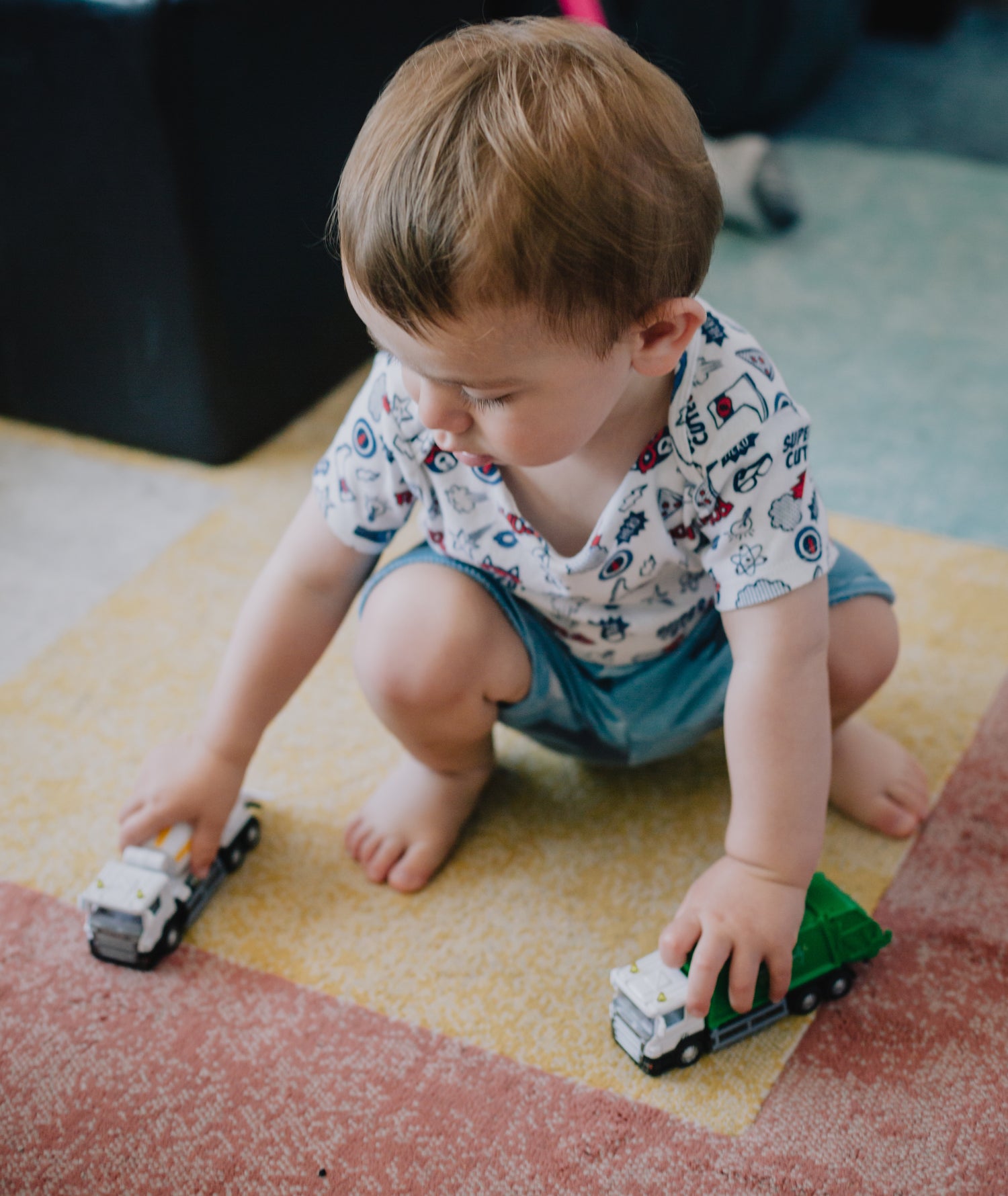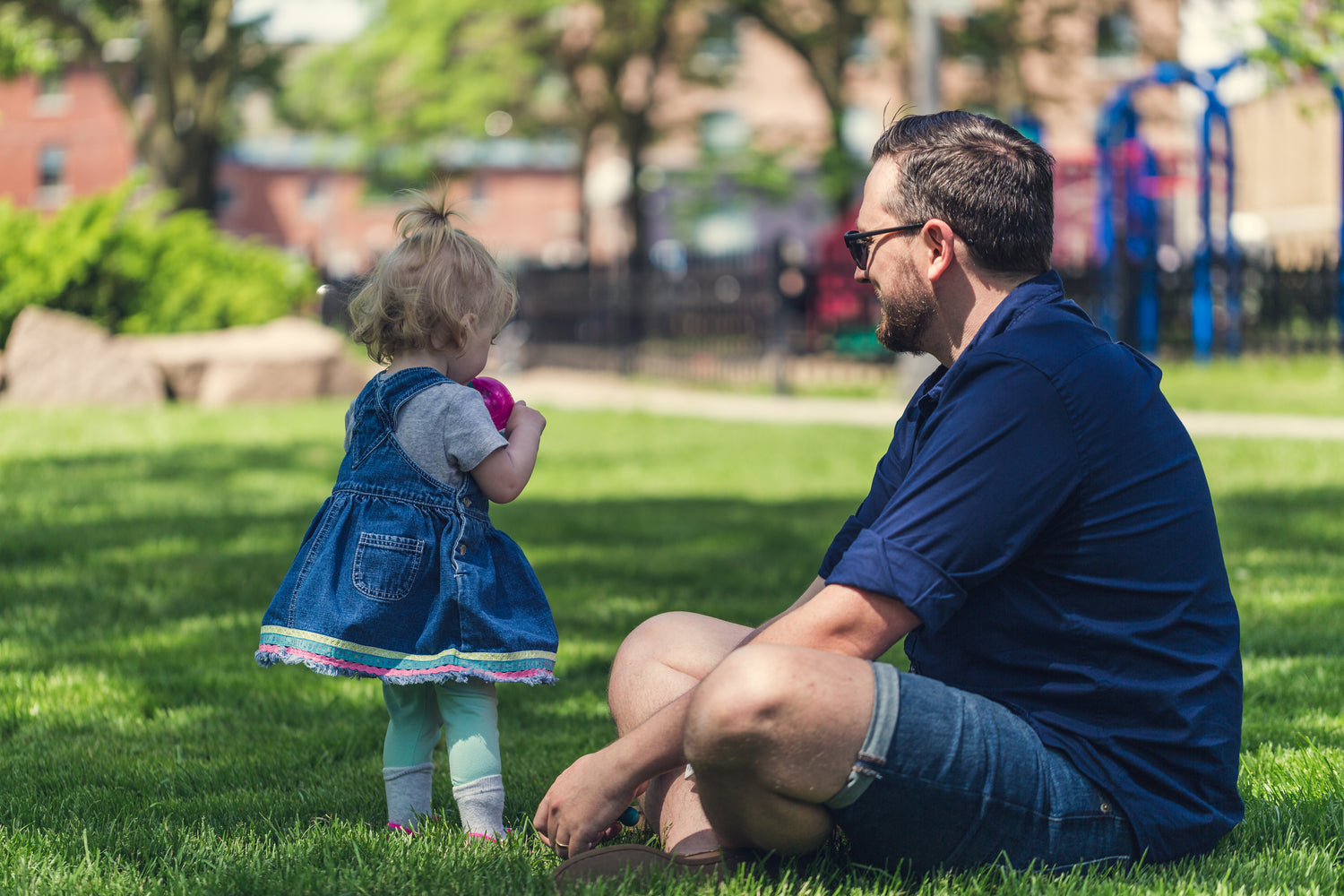Potty Training Guide
For Parents
Potty training is one of the biggest milestones in your toddler’s journey toward independence—and one of the most challenging phases for parents. For dads, this stage is an opportunity not only to help their child gain an essential life skill but also to build patience, trust, and confidence together. While every child learns at their own pace, the way you approach potty training can make the process smoother and less stressful for both of you.

Potty training typically begins between 18 months and 3 years, but readiness is more important than age. Signs your toddler may be ready include staying dry for longer periods, showing interest in the toilet, communicating when they’re wet or soiled, or expressing the desire to wear “big kid” underwear. Recognizing these cues helps avoid unnecessary pressure and frustration.

Potty Training Requires
For dads, potty training can feel overwhelming at first. Unlike diaper changes, which become routine, potty training requires consistency, encouragement, and patience—plus a sense of humor when accidents happen. Success often comes not from strict schedules but from making the process positive, supportive, and child-led.
Potty Training Guide
Potty training is a big milestone for your child—and an important step for you as a parent. While it can feel a little intimidating, remember that every child learns at their own pace. Your role as a dad is to guide, encourage, and make the process as stress-free as possible.
1. Know the Signs of Readiness
Before starting, look for cues that your child might be ready:
- Staying dry for 2+ hours
- Showing interest in the toilet
- Disliking dirty diapers
- Communicating when they need to go
2. Introduce the Potty
Let your child explore the potty or toilet seat without pressure. Show them how it works, and even let them sit on it fully clothed at first.
3. Lead by Example
Kids learn by watching. If you’re comfortable, let your child see you use the bathroom. This normalizes the process and helps them understand what’s supposed to happen.
4. Create a Routine
Take your child to the potty at predictable times—after meals, before bed, and first thing in the morning. Consistency builds comfort.
5. Encourage, Don’t Pressure
Celebrate successes with high-fives, praise, or a sticker chart. Avoid punishment for accidents—they’re a natural part of learning.
6. Stay Patient and Positive
Some days will feel like progress, others may not. The key is consistency, encouragement, and staying calm. Potty training is a journey, not a race.

Reminder
- Readiness over age: Don’t rush—follow your toddler’s cues.
- Routine matters: Consistency helps establish habits.
- Positive reinforcement works best: Praise progress and ignore setbacks.
- Modeling helps: Let your toddler see how you use the toilet.
- Stay patient and calm: Accidents are part of the learning process.
Creating A Routine
Creating a routine helps toddlers understand expectations. Simple steps like sitting your child on the potty at regular times, celebrating small victories, and offering gentle reminders can gradually turn potty training into a habit. Mistakes and setbacks are normal; staying calm and encouraging prevents shame and builds confidence.
Rewards, praise, and modeling are powerful tools. Toddlers love to copy, and when dads demonstrate bathroom habits in a relaxed way, children learn faster. Reading potty-themed books together or using reward charts can also add fun and motivation.
The journey isn’t always smooth—accidents will happen, and some days your toddler may resist. But with patience, humor, and consistency, dads can turn potty training into a bonding experience rather than a battle. In the long run, your involvement not only helps your child master this milestone but also strengthens their trust in you as a steady guide through life’s challenges.
-

Potty Training: Dad’s Role Matters
Potty training is a big step for your toddler, and dads play a huge part in making it successful. Your consistency, patience, and encouragement help your child feel confident. Celebrate small wins, stay calm during accidents, and remember—progress takes time, not perfection.
-

Making Potty Training Fun
Toddlers learn best when potty training feels positive. Dads can turn it into an adventure by using fun reward charts, special “big kid” underwear, and silly songs during potty time. A little humor and excitement go a long way in building your toddler’s confidence.
-

Patience Through Accidents
Accidents are part of the journey, not a setback. When dads respond with calm reassurance instead of frustration, toddlers feel safe to keep trying. Every attempt is progress, and your steady support teaches them resilience as they learn this new skill.
Patience, Independence, and Self-Confidence
Potty training isn’t just about teaching your toddler to use the toilet—it’s about teaching patience, independence, and self-confidence. With encouragement, consistency, and a little humor, dads can play a huge role in making potty training less stressful and more rewarding for the whole family.









